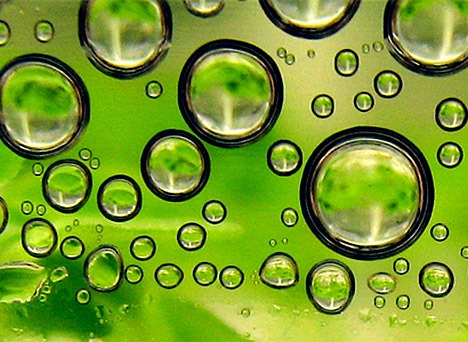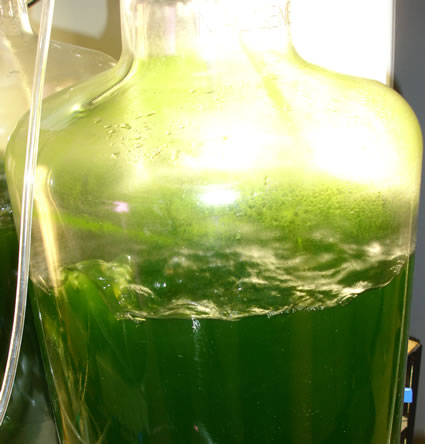Contents
- 1 A novel approach to enhance the growth and quality of microalgae using plant hormones
- 2 Prof. Aécio D’Silva, Ph.D AquaUniversity
- 3 What are phytohormones and how do they work?
- 4 How can phytohormones increase algal biomass and biofuel content?
- 5
- 6 What are the challenges and prospects of using phytohormones for algal biofuel production?
- 7
- 8 How can we apply phytohormones to microalgae?
- 9 References:
A novel approach to enhance the growth and quality of microalgae using plant hormones
Prof. Aécio D’Silva, Ph.D
AquaUniversity
Phytohormones – Microalgae are microscopic organisms that can convert sunlight and carbon dioxide into biomass and biofuels, such as biodiesel, bioethanol, and biogas. However, the current methods of cultivating microalgae are not efficient enough to meet the increasing demand for renewable energy. One of the challenges is to increase the biomass and biofuel content of microalgae while reducing the cost and environmental impact of the process. A possible solution is to use phytohormones, which are natural or synthetic compounds that regulate the growth and development of plants and algae.

What are phytohormones and how do they work?
Phytohormones are chemical messengers that coordinate the physiological and metabolic activities of cells, such as cell division, differentiation, photosynthesis, stress response, and nutrient uptake. Phytohormones can be classified into different groups, such as auxins, cytokinins, gibberellins, ethylene, abscisic acid, brassinosteroids, jasmonates, and salicylic acid. Each group of phytohormones has a specific function and mode of action, but they can also interact with each other to modulate their effects.
Phytohormones can be produced by plants and algae themselves or applied externally as supplements. The external application of phytohormones can alter the endogenous levels and balance of phytohormones, and thus affect the growth and quality of plants and algae. For example, auxins can stimulate cell elongation and root formation, cytokinins can promote cell division and chlorophyll synthesis, gibberellins can enhance stem growth and seed germination, and ethylene can induce fruit ripening and senescence.
How can phytohormones increase algal biomass and biofuel content?
Phytohormones can increase algal biomass and biofuel content by influencing various aspects of algal physiology and metabolism, such as:
- Cell proliferation: Phytohormones can stimulate algal cell division and growth, and thus increase the biomass yield. For example, cytokinins can increase the cell number and size of Spirulina by enhancing the expression of genes related to cell cycle and DNA synthesis. [1]. Auxins can also increase the cell number and biomass of Chlorella by activating the mitogen-activated protein kinase (MAPK) pathway. [2].
- Stress tolerance: Phytohormones can improve algal resistance to various abiotic stresses, such as high light, high salinity, nutrient limitation, and heavy metals, which can otherwise reduce biomass and biofuel production. For example, abscisic acid can protect Dunaliella from high salinity stress by increasing the accumulation of compatible solutes, such as glycerol and proline.[3]. Salicylic acid can enhance the antioxidant capacity of Chlamydomonas under high light stress by increasing the activity of superoxide dismutase (SOD) and catalase (CAT). [4].
- Photosynthetic efficiency: Phytohormones can increase algal photosynthesis and carbon fixation, and thus increase biomass and biofuel production. For example, gibberellins can increase the photosynthetic rate and chlorophyll content of Scenedesmus by upregulating the expression of genes related to photosystem II (PSII) and carbonic anhydrase (CA). Brassinosteroids can also increase the photosynthetic rate and chlorophyll content of Chlorella by enhancing the activity of ribulose-1,5-bisphosphate carboxylase/oxygenase (Rubisco) and phosphoenolpyruvate carboxylase (PEPC).
- Energy storage: Phytohormones can increase algal biofuel content by influencing the synthesis and accumulation of energy-storage compounds, such as lipids, carbohydrates, and proteins. For example, jasmonates can increase the lipid content and fatty acid composition of Nannochloropsis by inducing the expression of genes related to lipid biosynthesis and metabolism. Ethylene can also increase the lipid content and fatty acid composition of Chlorella by activating the acetyl-CoA carboxylase (ACC) and fatty acid synthase (FAS) enzymes.
What are the challenges and prospects of using phytohormones for algal biofuel production?
Using phytohormones for algal biofuel production is a novel and promising approach, but it also faces some challenges and limitations, such as:
- Optimization: The optimal concentration, combination, and timing of phytohormone application may vary depending on the algal species, strain, and cultivation conditions. Therefore, it is necessary to conduct systematic and comprehensive experiments to determine the best phytohormone treatment for each algal biofuel system.
- Cost-effectiveness: The cost and availability of phytohormones may affect the economic feasibility and scalability of using phytohormones for algal biofuel production. Therefore, it is important to develop low-cost and high-efficiency methods of synthesizing and applying phytohormones, such as using biotechnology or nanotechnology.
- Environmental impact: The use of phytohormones may have some negative effects on the environment, such as causing phytohormone pollution, altering the natural balance of phytohormones, and affecting the biodiversity and ecology of aquatic ecosystems. Therefore, it is essential to evaluate the environmental safety and sustainability of using phytohormones for algal biofuel production.
Despite these challenges, using phytohormones for algal biofuel production has great potential and prospects, as it can:
- Enhance the performance and quality of algal biofuel systems, by increasing the biomass and biofuel yield, improving the stress tolerance and stability, and optimizing the biofuel composition and properties.
- Complement and synergize with other methods of improving algal biofuel production, such as genetic engineering, metabolic engineering, and bioprocess engineering, by providing additional or alternative ways of regulating algal physiology and metabolism.
- Contribute to the development and innovation of algal biotechnology, by providing new insights and opportunities for understanding and manipulating the molecular and cellular mechanisms of algal growth and biofuel production.
How can we apply phytohormones to microalgae?
Phytohormones are natural or synthetic compounds that regulate the growth and development of plants and algae. They can be applied to microalgae as supplements to enhance their biomass and biofuel production, by influencing various aspects of their physiology and metabolism, such as cell proliferation, stress tolerance, photosynthetic efficiency, and energy storage. [8]
There are different methods of applying phytohormones to microalgae, depending on the type, concentration, and combination of phytohormones, as well as the algal species, strain, and cultivation conditions. Some of the common methods are:
- Adding phytohormones directly to the culture medium, either as a single dose or as a continuous supply, at different stages of algal growth. [9]
- Coating phytohormones on the surface of the culture vessel, such as glass, plastic, or metal, allows gradual release and absorption by the microalgae. [8]
- Encapsulating phytohormones in nanoparticles, such as liposomes, polymers, or silica, to enhance their stability, solubility, and delivery to the microalgae
The optimal method of applying phytohormones to microalgae may vary depending on the specific objectives and constraints of each algal biofuel system. Therefore, it is necessary to conduct systematic and comprehensive experiments to determine the best phytohormone treatment for each case. [9, 10]
Concluding, phytohormones are a class of natural or synthetic compounds that regulate the growth and development of plants and algae. By applying phytohormones to microalgae, it is possible to increase the biomass and biofuel content of microalgae, by influencing various aspects of algal physiology and metabolism, such as cell proliferation, stress tolerance, photosynthetic efficiency, and energy storage. Using phytohormones for algal biofuel production is a novel and promising approach, but it also faces some challenges and limitations, such as optimization, cost-effectiveness, and environmental impact. Therefore, further research and development are needed to improve the understanding and application of phytohormones for algal biofuel production and to explore the potential and prospects of this approach for algal biotechnology.
Versão deste artigo em português:
References:
[1] Da Silveira, J.T., da Rosa, A.P.C. & Costa, J.A.V. Modulating phytohormone supplementation can efficiently increase biomass and lipid production in Spirulina (Arthrospira). Bioenerg. Res. 15, 112–120 (2022). https://doi.org/10.1007/s12155-021-10310-3
[2]: Fathy WA, AbdElgawad H, Hashem AH, Essawy E, Tawfik E, Al-Askar AA, Abdelhameed MS, Hammouda O, Elsayed KNM. Exploring Exogenous Indole-3-acetic Acid’s Effect on the Growth and Biochemical Profiles of Synechocystis sp. PAK13 and Chlorella variabilis. Molecules. 2023 Jul 19;28(14):5501. doi: 10.3390/molecules28145501. PMID: 37513371; PMCID: PMC10385099.
[3] Carillo P, Ciarmiello LF, Woodrow P, Corrado G, Chiaiese P, Rouphael Y. Enhancing Sustainability by Improving Plant Salt Tolerance through Macro- and Micro-Algal Biostimulants. Biology (Basel). 2020 Aug 28;9(9):253. doi: 10.3390/biology9090253. PMID: 32872247; PMCID: PMC7564450.
[4]: Chen YE, Mao HT, Wu N, Mohi Ud Din A, Khan A, Zhang HY, Yuan S. Salicylic Acid Protects Photosystem II by Alleviating Photoinhibition in Arabidopsis thaliana under High Light. Int J Mol Sci. 2020 Feb 12;21(4):1229. doi: 10.3390/ijms21041229. PMID: 32059402; PMCID: PMC7072977.
[5] Dao, G., Wang, S., Wang, X., Chen, Z., Wu, Y., Wu, G., Lu, Y., Liu, S., & Hu, H. (2020). Enhanced Scenedesmus sp. Growth in response to gibberellin secretion by symbiotic bacteria. Science of The Total Environment, 740, 140099. https://doi.org/10.1016/j.scitotenv.2020.140099
[6] Lv JM, Cheng LH, Xu XH, Zhang L, Chen HL. Enhanced lipid production of Chlorella vulgaris by adjustment of cultivation conditions. Bioresour Technol. 2010 Sep;101(17):6797-804. doi: 10.1016/j.biortech.2010.03.120. Epub 2010 Apr 24. PMID: 20456951.:
[7] Cui, H., Yang, F., & Li, Y. (2021). Exogenous methyl jasmonate enhances lipid production in Isochrysis galbana under nitrogen deprivation and high light. Algal Research, 58, 102406. https://doi.org/10.1016/j.algal.2021.102406: Ethylene enhances the lipid accumulation in Chlorella vulgaris
[8] Lu Y, Xu J. Phytohormones in microalgae: a new opportunity for microalgal biotechnology? Trends Plant Sci. 2015 May;20(5):273-282. doi: 10.1016/j.tplants.2015.01.006. Epub 2015 Feb 17. PMID: 25697753.
[9] Nguyen, H.N., Kisiala, A.B. & Emery, R.J.N. The roles of phytohormones in metal stress regulation in microalgae. J Appl Phycol 32, 3817–3829 (2020). https://doi.org/10.1007/s10811-020-02271-5
[10] Wang, C.; Qi, M.; Guo, J.; Zhou, C.; Yan, X.; Ruan, R.; Cheng, P. The Active Phytohormone in Microalgae: The Characteristics, Efficient Detection, and Their Adversity Resistance Applications. Molecules 2022, 27, 46. https://doi.org/10.3390/molecules27010046






